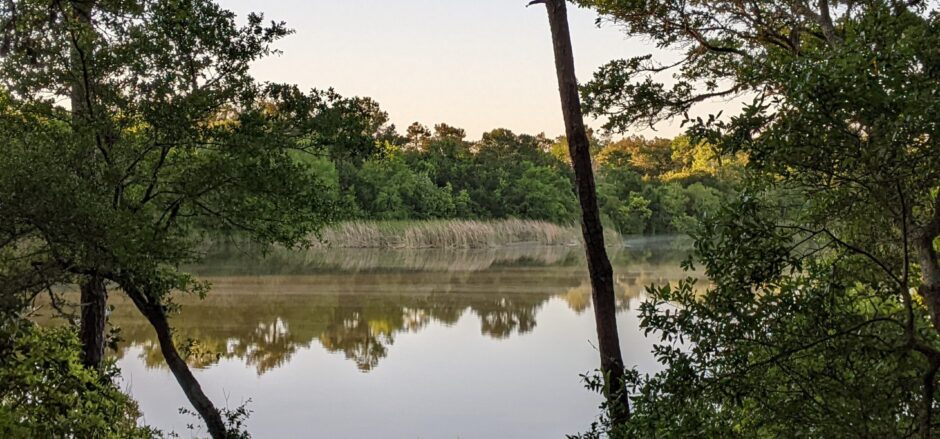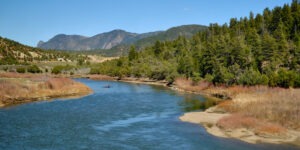High Treason
I do not love my country. Its abstract splendour
is beyond my grasp.
But (although it sounds bad) I would give my life
for ten places in it, for certain people,
seaports, pinewoods, fortresses,
a run-down city, gray, grotesque,
various figures from its history,
mountains
(and three or four rivers).José Emilio Pacheco, translated by Alastair Reid
This post is an excerpt from a long essay about California Zephyr trips my husband and I took a decade ago from Denver to the end of the line near San Francisco, at Emeryville. My heart aches for the Colorado River, our climate change drought and mountain fires. This piece is dedicated to that river, its mountains and canyons.
Near Granby the conductor announced, “we just picked up the Colorado River and we’ll follow it for over 200 miles.”
Swirls of coppery water bubbled just feet below us. The far shore reflected pine green, the brick red of the cliffs, but in midstream, the Colorado was always copper, bronze, steel gray. Slivers of blue rarely shimmered on its restless surface. A guy in the observation car said, “This is the river that made the Grand Canyon. Give it a million years and it’ll turn this into one.” If we haven’t dammed it out of the ability to do so. The Colorado once drained into the Gulf of California. Now it trickles to an end far from that shore, in the salt flats that its delta became.
Approaching Glenwood Canyon the river is wide, placid, perfectly mirroring the hill on the far side. Then it narrows into boulders, descends to white water froth. The tracks hug the river. Sage growing between the tracks and water brushed the train. Tree branches dipped in our wake. In 2008, we passed raft after raft and most waved at us. One chunky guy turned to pull down his shorts, the pale flesh of his buttocks bright in the sun. Mooning the train is a rafter tradition on the Colorado.
So long as we ran beside the river, I watched it tirelessly, mesmerized. Edward Hoagland: “Water is our birthright…we go to it for rest, refreshment, solace…in any landscape, in fact, a pond or a creek catches and centers our attention as magnetically as if it were, in Thoreau’s phrase, ‘earth’s eye.’”
In 2010, the Colorado enjoyed a high runoff spring. At Glenwood, we had lunch in the dining car in time to watch a fiercely frothing river cascade over the bike path, toss tree trunks like twigs, crash against the concrete barriers of its confinement. No rafting in the river during that spring runoff. In the canyon, the roiling water swirled nearly level with us, then swiftly dropped down, down, until I strained to catch glimpses of it. It grew quiet then: just the soft whir of tracks, the muted blast of the horn marking intersections ahead.
Ruby Canyon of the Colorado River is a place no highway takes you, a place we reached with the long shadows of late afternoon. The conductor pointed out a bald eagle nest in a cottonwood on the riverbank. He’d been watching the progress of the chicks since they hatched. Accustomed to the train, the eagles ignored our passage. Three deer leapt through brush climbing the far shore.
The observation car was packed for Ruby Canyon’s dramatic red and golden cliffs, fingers and pillars of rock this river also created. In the midst of the canyon, we entered Utah. Before we left the now placid river behind, two more rafters mooned us, although by then we barely glanced at their pale bottoms. The river turns south, heading for the Gulf of California, a destination it no longer has enough water to reach. Mexican and American environmentalists have been working years to gain water rights, restore patches of the delta to its former lushness. Those patches are bright emeralds set into barren land. The river turns south as the light fades. The Zephyr turns north toward Salt Lake City, desert and nightfall.



Oh the Colorado River and it’s story is one that should give us pause. A few years back, Rik Sargent, noted Denver artist (wolves at Museum of Nature and Science) presented a photography and sculpture show around the Colorado River and what has happened to it. It was very educational and thought provoking.
Is there a word for beautiful heartache?
Beautiful, Pat. Reminds me of my favorite route to Moab, turning off I-70 at Cisco, Utah, following the river all the way. Remembering all that beauty—river, cliffs, winding through canyons, blue sky and stars at night—brings a sadness hard to name.
Bob Jaeger, as Andrea said just before you—is there a word for beautiful heartache?
Longing maybe?
As close as I can come to it: longing is a good choice.
Beautiful and thought provoking, Pat.
One of my fond memories of the Colorado River was from kayak, dancing through heart-pounding rapids, then floating lazily between canyon walls more colorful than a painter’s pallet. The other repeated memory, for we backpacked the Grand Canyon many times, was viewing the Colorado from the rim as a tiny creek which, by the time we had hiked to its edge, had grown to a raging behemoth capable of cutting though two billion years of strata. Truly breathtaking!
Beautiful memories of a river, Denise!Good to hear from you!